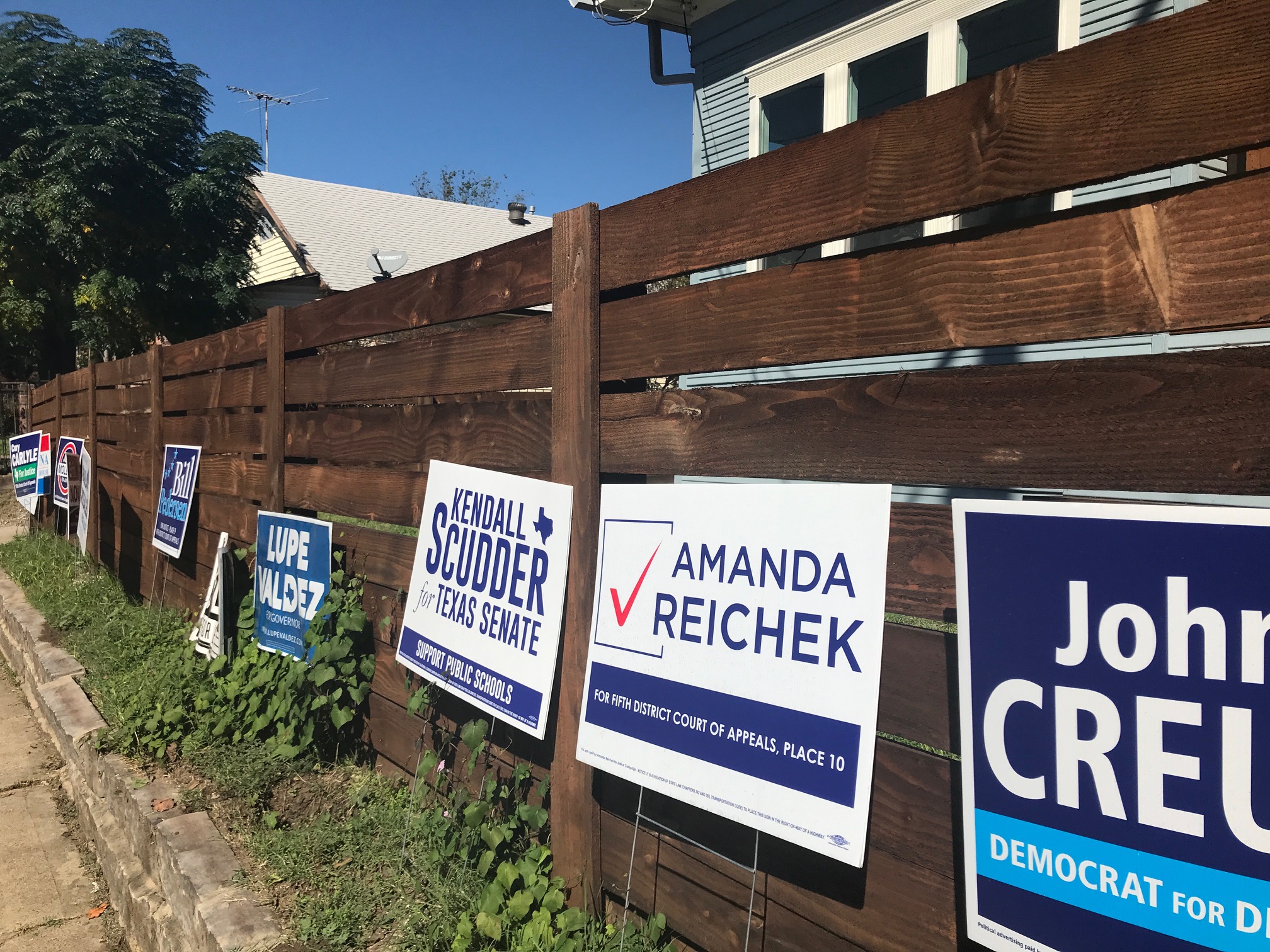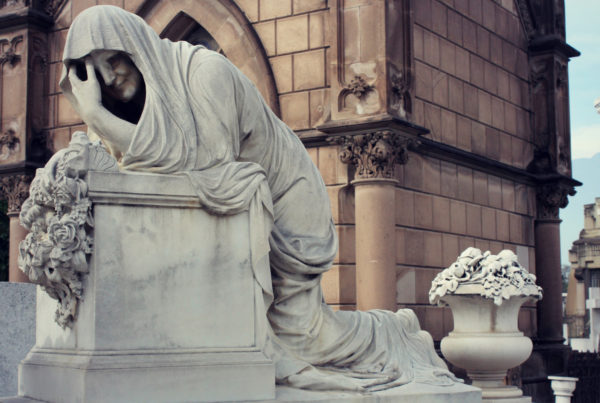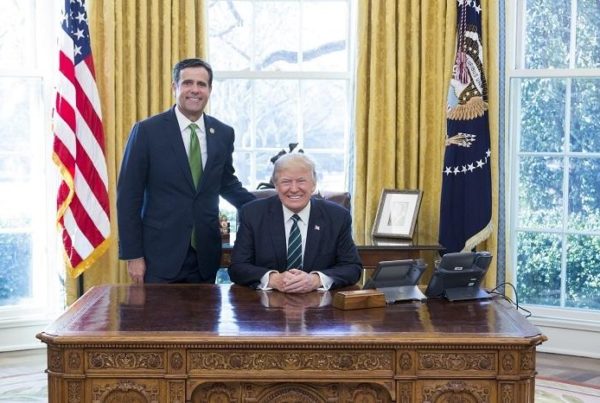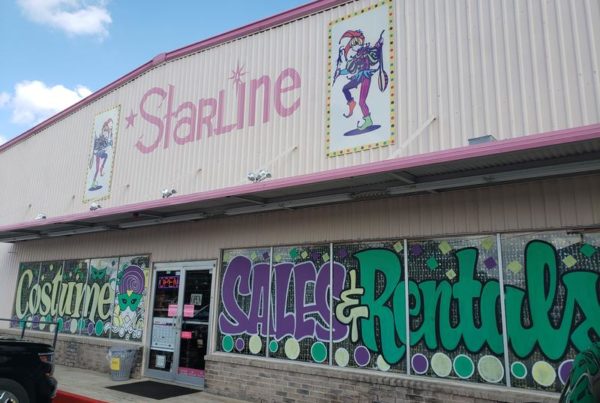This political season in Texas, yard signs have been at the center of stories that sound – well – straight out of The Onion. There’s the couple who turned their front lawn into a giant, hand-painted Beto O’Rourke sign. Or the anti-Brett Kavanaugh sign in Hamilton that police threatened to confiscate after Agriculture Commissioner Sid Miller posted about it on Facebook. Our Texas Decides series continues.
Today’s question – or subject really – comes from Bud Sturguess of Amarillo.
“I’m an author and a lay chaplain, which basically means I’m a preacher and minister without a seminary degree,” he says.
He’s also a faithful pedestrian. And he’s growing out his beard. That’s an important detail because, he says, in its half-grown out state, well, his beard looks crazy.
“I have to walk through a lot of residential neighborhoods and in doing so I make sure to walk very calmly and at a deliberate pace because of the way I look,” Stur Sturguess says. “I don’t want to seem like I’m rushing from the scene of something abominable!”
That’s given him a lot of time to take in a weedy abundance of yard signs. And he got to wondering – what’s the point?
“No one, at least I would hope, has ever based their decision on Election Day on how impressed they were by the color scheme or the font of one candidate sign over the other,”Sturguess says. “I don’t think anyone who voted in the Lincoln-Douglas election in 1860 voted for one or the other because they preferred Times New Roman over Helvetica.”
What do the experts say?
“I think he has some justified skepticism there”, replies Elizabeth Simas. She teaches political science at the University of Houston, and researches voter behavior and political psychology. She says, at the most basic level, yard signs are like any other type of advertising. But.
“The literature is kind of mixed on the effectiveness of campaign signs,” Simas says. “There’s not strong evidence that they help, there’s not strong evidence that they hurt. I think that what people would say the effectiveness more is activation rather than persuasion.”
That’s what people with boots on the ground would tell you too. Like Kim Moody.
“I live in Denton Texas and I’m a Republican precinct chair,” Moody says.
As part of her precinct chair duties, Moody distributes literature and yard signs for candidates like Ted Cruz and Greg Abbott.
“It just brings attention to people in the general population. Hey, we’re getting close to election time. See what you can find out and go vote,” she says.
Moody thinks yard signs “activation” role is strongest during the primaries, when people are looking within their own party.
“It allows people to see multiple names out there and maybe seek out information about candidates,” Moody says. “During the general election season like we are in right now, you have party against party – people who choose, you know to put them in your yard have already made a decision. They’re committed to a candidate and they’re showing that to everyone around them.”
Our question asker, Bud Sturguess, thinks that too, but he’s a bit more cynical.
“I can come to no other conclusion that the only reason one puts up a sign bearing their candidate’s name is to be obnoxious,” he says.
That brings us to the second part of what Sturguess has been pondering. Why do some people choose to put out signs?
“To maybe irk a conservative who’s driving by, or a liberal depending on your stance?”Sturguess says.
Professor Elizabeth Simas says, yeah, that’s probably some people’s motivation. But it’s a lot more complicated.
“It’s an interesting form of participation because it is so public,” she says.
Voting’s private, so is writing a check.
“But a yard sing? That’s really putting it out there,” Simas says. “And there is a particular subset of people who are more inclined to do that than others.”
Simas says that has to do with how concerned people are about what others think of them, regardless of how passionate they are about their political convictions.
“Being more concerned about the social desirability of what they’re doing….people who are high on self-monitoring or people who may be more concerned about ‘well what… What would my neighbors think. If they don’t like this?’ They’re going be less likely to put those signs out,” she says.
And what do the yard-sign-havers of Texas have to say about all this? I decided to ask someone with a big Joanna Cattanach for State House sign in his East Dallas yard. His name is Robert Ackerman.
He says he knows his neighbors, and isn’t too worried about bugging them with signs. He also feels like putting out signs can be one way for him to make a difference in a simple way.
“People ask us to put up signs where we’re on a good thoroughfare to the school,” Ackerman says. “There’s a line of traffic every morning. Candidates that know us ask and we’ll put a sign in the yard and sometimes we do. And in this case they gave us a really big one.” Ackerman estimates it’s about four-feet tall.

















